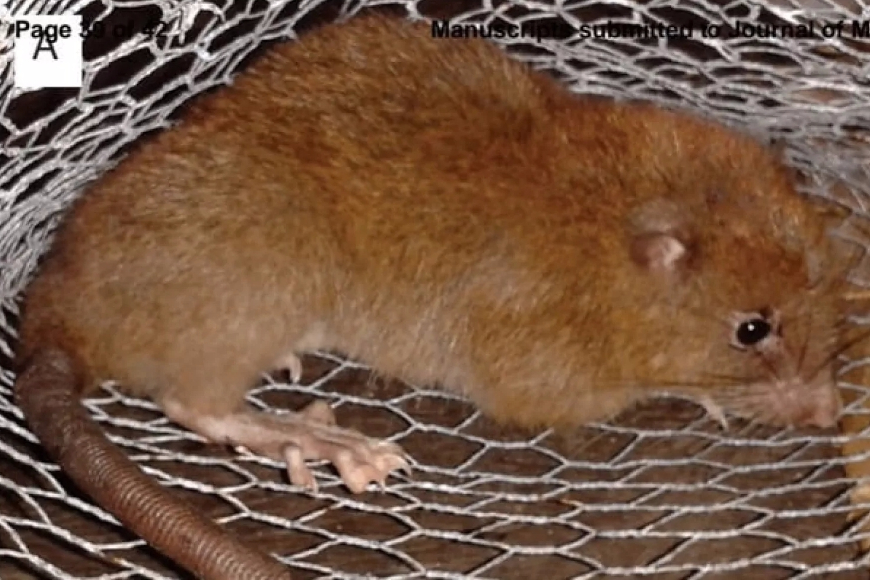Scientists in the Solomon Islands have discovered a rodent that up until now, had been thought to be no more than a children’s rhyme. The legendary Vika is a giant rat rumored to live in trees, reaching lengths of a foot and a half, with razor-sharp teeth that can punch through coconuts.
Tyrine Lavery, a mammologist, found the giant rat. Apart from its already terror-inducing features, it has a tail covered in scales and a big jaw, as rare photos revealed, The Washington Post reports. Bearing the scientific name Uromys vika, the rat is the first rodent species to be discovered in the Solomon Islands in close to a century.
Lavery was sitting around a campfire on the island of Vangunu, talking to village elders. When asked what he might find in the forests, he said,
They told me about this giant rat they called Vika.
So Lavery set out into the forests and spent several nights and days searching among the trees. He found coconuts with holes in them, and one night, his flashlight spotted two rats running along a branch. “It was only a fleeting glimpse. To this day, I can’t be certain whether it was Vika . . . But it was enough to start me thinking we had a chance to find this rat,” he described.
Lavery found that the rat’s name was listed in a dictionary of words from the region compiled in the 1990s, where Vika read as: “A very big rat that eats coconuts.”
The scientist returned to the forest nearly a dozen times in five years, but was concerned the rat might be extinct as logging was taking down the trees on the island. Then in 2015, he got a call from the island.
Loggers felled a kapuchu tree, and something big and brown scrambled out of it. John Vendi and Hikuna Judge, friends of Lavery’s, captured the animal. It looked to be young, but was already a foot and a half long, estimated to weigh close to two pounds.
Lavery arranged for transport, but the Vika rat died shortly due to its injuries. Villagers buried it for 10 days before a friend of the scientist dug it up and brought it to Queensland, where Lavery and a team studied it.
Lavery said of the find, “It’s a bittersweet moment.” He now seeks to have the rat placed on the endangered species list.
The study was published in the Journal of Mammalogy.
























